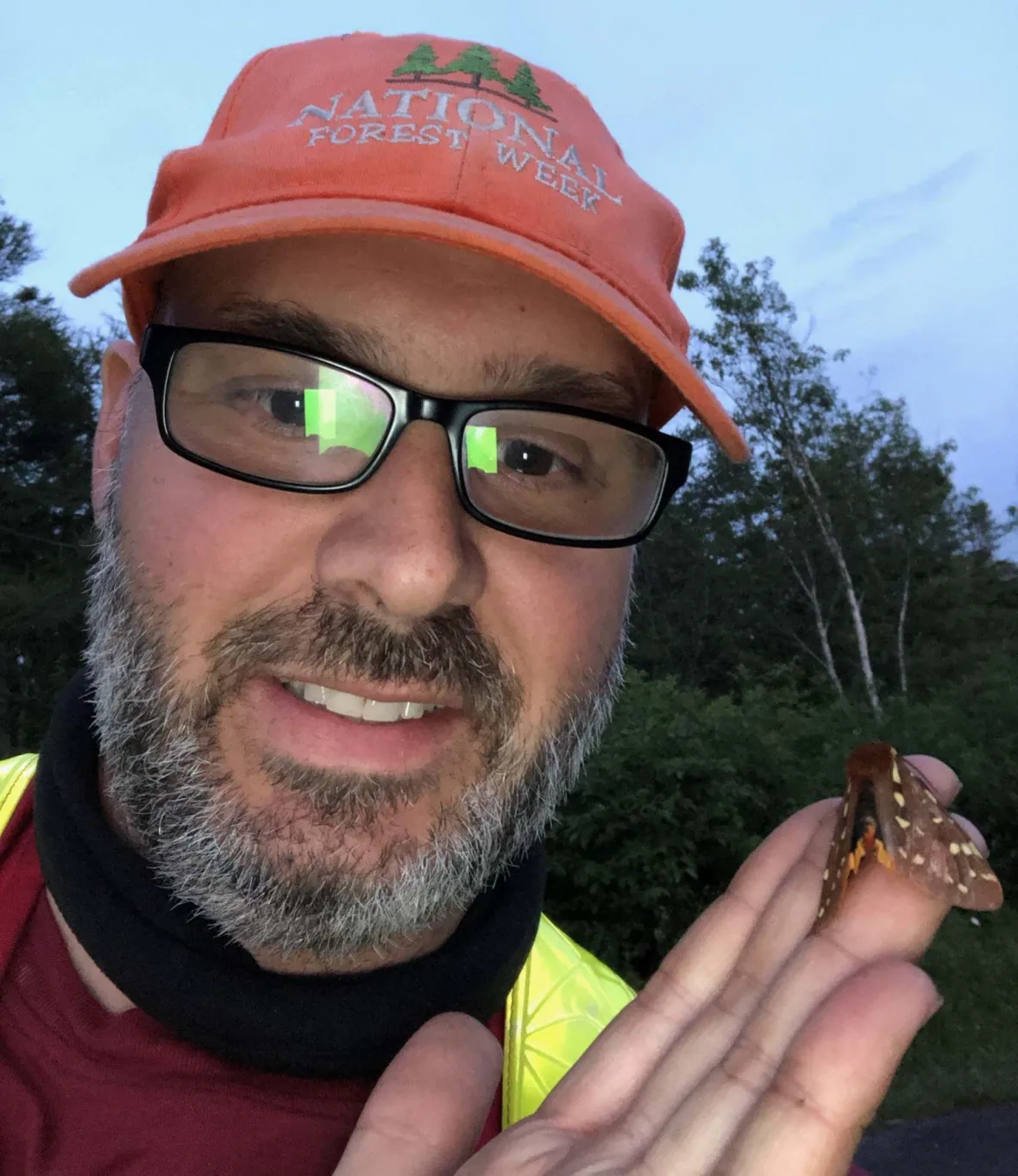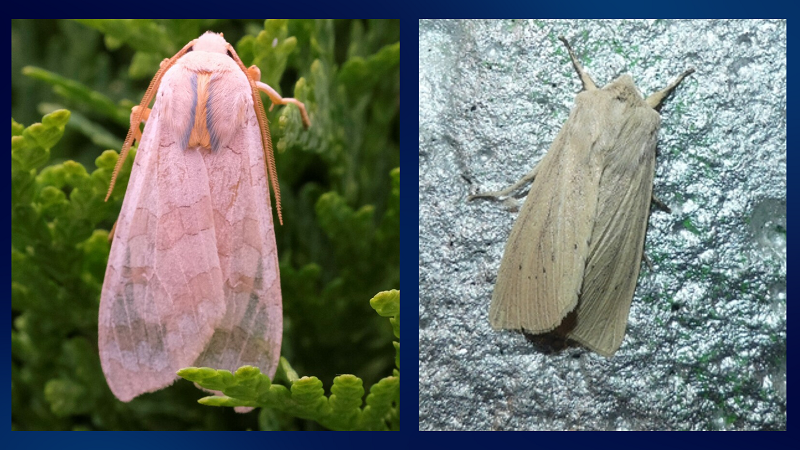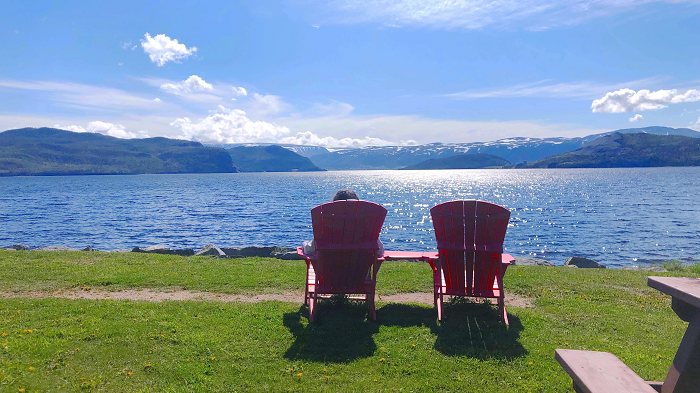As experts tackle the effects of climate change on a global scale, what’s going on in your backyard? Take moths for example. Moth populations are rapidly declining in many parts of the world. Joe Bowden, an entomologist with the Canadian Forest Service, is taking notice and urges others to do the same.
December 2022
Tell us about your moth wall project. When did you come up with the idea?

Joe Bowden, entomologist, Canadian Forest Service
Joe Bowden: While I was working in Denmark some years ago, one of my colleagues introduced me to a few light walls she established to attract moths. I thought “this is super cool,” and it stuck with me. Upon moving back to Canada a few years ago, I started to think there’s an opportunity here.
We have all these national parks right across the country. This might be a way we can start to understand this fascinating group of insects and involve the public to collect valuable data and gain a better understanding of the biodiversity of this important insect group. Now, if you’ve never heard of them, moth walls are relatively simple. All it takes is a white surface and a light. The light attracts moths at night and they land on the white surface. Then people can take photos and share them online by uploading them to sites like iNaturalist.ca, which is a global community of naturalists. It’s pretty cool.
This is one part public engagement and one part scientific research. We’re collecting data using a community science approach to start tracking the distribution of moths across the country related to climate change or other disturbances over time.
There are moth walls in all Parks Canada locations in Atlantic Canada. Visitors are encouraged to take photos of moths and share on social media.
Why are moths important?
Moths are super-diverse and have a really important role in our ecosystems. But we know very little about them because they’re mostly active at night. Moths are relatively hyperabundant; they’re also out there performing all sorts of super important ecosystem services like pollination. People are familiar with the role of butterflies, but moths also pollinate some essential flowers and specific plants that people and wildlife rely on. Moths and their caterpillars are a vital food source for a lot of migratory birds, bats and other small mammals. Like everything in nature, these services are critical to the sustainable functioning of our planet’s ecosystems. Moths and other insects are like a canary in the coal mine when it comes to climate change.
What have you discovered so far?
We now have moth walls in most National Park locations in Atlantic Canada. These moth walls have already resulted in two new provincial records — two moth species that are new to the range where they were found — one in Prince Edward Island and the other in Newfoundland and Labrador. The one species found in P.E.I., the large wainscot moth, has never been found or identified in that province before, although it’s found on the mainland. The other new record, the banded tussock moth in Newfoundland and Labrador, is anecdotally thought to be a species moving farther north as the result of climate change.

Two new observations: left, banded tussock moth (Halysidota tessellaris) credit: iNaturalist, Naomi Cappuccino; right, large wainscot moth (Rhizedra lutosa) credit: iNaturalist, Christian Grenier.
Are there ways AI technologies can help?
I’m working on a research project with colleagues in Europe exploring AI technology for tracking insects and the first version of the system is a mini light wall, like our moth walls, but smaller. These ones have high-resolution 4K cameras taking images throughout the night and then, using software created by a developer in the United States, we can run those images through a program and it identifies the species. It really saves a lot of time. If you think about the global biodiversity crisis, these kinds of technologies are really at the forefront of us being able to tackle the problem of documenting biodiversity and how it’s changing over time. I would like to incorporate some of that technology into our moth walls, but it’s a matter of bringing both together.
Why is moth biodiversity rapidly declining?
Unfortunately, we don’t have deep knowledge of moth species in Canada. But in other countries like the U.K., where they’ve been tracking species of moths for decades, we see sharp declines in biodiversity over time. That means the numbers of moths tracked and the variety of species observed have both declined. Many human-driven factors impact moth diversity, including habitat loss, pollution and climate change. Their physiology, the way their bodies work, and their basic body functions are directly driven by external temperatures. As humans, we can go running, burn off all kinds of energy, replenish our bodies and our internal temperature remains constant. But for insects, the hotter temperatures typically mean they burn more energy at a faster rate, constantly, as they have little to no internal temperature control. This could ultimately come at a cost to body size and the amount of energy/resources they have to invest in reproduction and survival. A changing climate also affects their seasonal life cycles, some are emerging earlier in spring before there is food available for them. It also affects their range (where they are found). Since they generally don’t migrate, many moth species aren’t very successful in dealing with shifting habitat conditions.
How can people at home contribute?
You can help! Set up your own moth wall at home (even the side of your house) and take photos of moths and share them on iNaturalist.ca. Or if you’re in Atlantic Canada, visit one of our moth walls. Community science has a really important role in helping us understand which species are where, but also helps us track changes related to climate change. Who knows, you might be the next person to detect a new species record!

A park visitor experiences Parks Canada’s ‘red chair’ project, overlooking the water at Gros Morne National Park, NL.
What stage is your moth wall project at right now?
My dream here is that this becomes a sort of red chair story, you know how there are red chairs in national parks and they’ve become a bit of a destination in themselves? Visitors go there and sit in the red chair, take photos and share on social media. I’m hoping this program could catch on like that and spread across the country. Much work remains to be done to understand our moth populations.
This Simply Science interview was edited for length and clarity.
For more information:
More about Joe Bowden’s work on ResearchGate